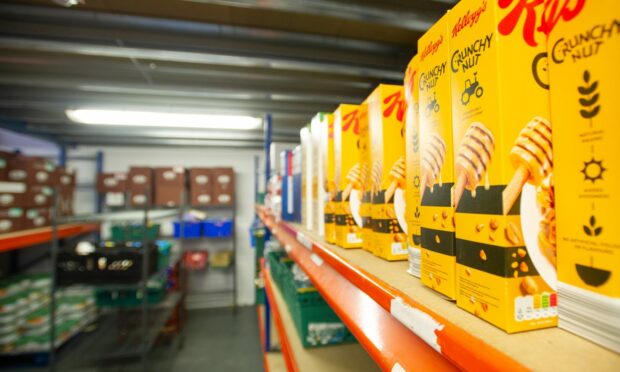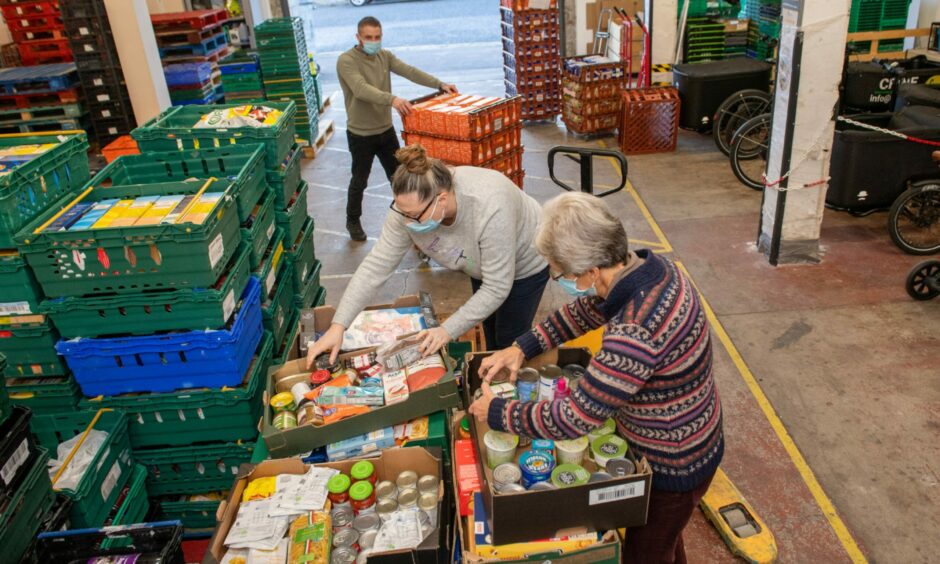Despite foodbank numbers continuing to soar year on year, there are still misconceptions around accessing emergency food.
This year, it is expected that demand for emergency food will remain “incredibly high” – which is why the Press and Journal, Evening Express and Original 106 have teamed up to tackle food poverty.
The Big Food Appeal aims to raise awareness of the plight people across Grampian and the Highlands face every week and dispel some of the myths surrounding foodbanks while encouraging readers to do what they can to help.
Additionally, there are many misconceptions around food poverty and foodbanks that we are aiming to dispel throughout our campaign.
Here are some of the more common myths:
Foodbanks only provide food
While the main focus is to provide people in need with emergency food parcels, foodbanks often provide other items and services.
Some foodbanks provide sanitary products and toiletries to clients as part of their food parcel upon request.
Families can receive nappies as well as baby food, and, depending on supply, foodbanks sometimes have pet food available – check out Cfine’s shopping list if this is the kind of help you would like to give.
Foodbanks are unhealthy
It is often thought that you only get tins of beans from foodbanks, but that’s just not true. Emergency parcels are tailored to the client’s needs and are made up of three days worth of nutritionally balanced foods.
These parcels are made up of essential everyday items aimed to provide healthy meals, including dried food such as pasta and rice, tins of fruit and vegetables and pasta sauces. They can often include UHT milk, cereal and bread as well as other cupboard essentials.
Foodbanks are only for unemployed people
Foodbanks are for anyone facing a crisis or in need of help.
With fuel prices rising and cuts to universal credit, many who are already struggling to afford the cost of living will face increased challenges over the next few months.
Graeme Robbie, development manager at Cfine, explained that these new challenges will have an impact on peoples’ budgets.
He said: “People who do request support will often state that they are having issues with their bills and things like that.”
Only religious people can get emergency food from a church
If the nearest foodbank is run by a church or religious group, they will still provide people with food parcels even if they are not religious.
Churches and religious groups are open to helping anyone in need.
Food poverty is not a problem in the north and north-east
Between 2020 and 2021, Cfine delivered more than three million meals across Grampian, Highland and Islands.
Mike Sutherland is the development officer for Cfine in the Highlands and islands, he said during the pandemic more than 500 tonnes of food – or 1.3 million meals – were delivered across his area.
Cfine have a base in Aberdeen that distributes surplus food from FareShare across the north and north-east. The charity is now planning an Inverness warehouse to make their service more “flexible and accessible”.
Foodbanks lead to dependency
Foodbanks are there to help people facing a crisis situation.
They can also provide other services such as financial advice and support, counselling, and skills development programmes. They work to get people back on their feet, supporting themselves and their families.
Some foodbanks take on volunteers to help beneficiaries get work experience and references needed to find work. This breaks the cycle some people are trapped in.
They want to alleviate food poverty and eventually the need for foodbanks.



